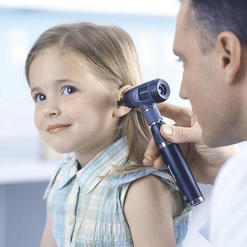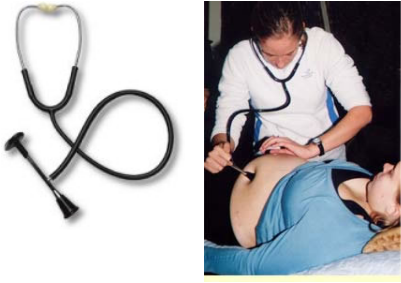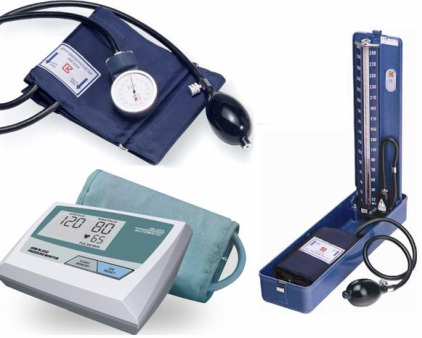June is often referred as the wedding month. But do you know that in healthcare industry, this same month is also observed as the National Congenital Cytomegalovirus Awareness Month? That’s true! The Department of Health and Human Services in United States declared June as the National Congenital CMV Awareness Month. This particular event aims to let people become aware about congenital cytomegalovirus infection at the same time educate not only the women who are in childbearing age but also the entire community on how to prevent such health condition.
So what is congenital cytomegalovirus infection? Well, this is the most common congenital (meaning present at birth) viral infection in humans; particularly on pregnant women. The infection is heritable and based on surveys, there are about 30,000 to 40,000 infants born each year in the United States or an average of one percent of all live births who are diagnosed to be positive on this particular viral infection.
So how does it happen? Transmission of CMV is not associated with food, water, or animals but from the body fluid excretions like saliva, blood, urine, breast milk, cervical secretions, and semen. Thus, once a person made a close or intimate contact to another person who is positive for a CMV infection, that individual will be infected also by the said virus. An excellent example for this is a childbearing woman diagnosed to have cytomegalovirus during pregnancy. The fetus in the utero will surely be affected once born because this particular virus (belonging to herpes family) that exists in the mother’s blood crosses over the placenta then infects the fetus’ blood.
Individuals with healthy immune system but had a first infection of CMV will rarely experience symptoms. The virus will silently live in the body and once it becomes active or reactivated, it can lead to a CMV disease. And during that time, infected individuals will start to experience sore throat, fever, swollen glands and fatigue. Ignoring these symptoms can lead to serious illnesses like pneumonia, hepatitis, encephalitis, seizures, behavioral changes and eyesight-threatening infections for those who have AIDS, had an organ transplant, or have a compromised immune system. This is the reason why expectant moms are highly advised to undergo regular checkup during pregnancy so as to prevent their newborn babies from acquiring congenital abnormalities.
Infants who have acquired CMV infection (before or after pregnancy), once examined using a number of specialized hospital medical equipments, are said to be at risk for various physical and neurological problems such as having much bigger liver and spleen, hearing loss, vision impairment, speech defects, problems with school maturity, etc.
Up to now, there is no specific treatment being discovered yet for cytomegalovirus. However, this specific type of viral infection can be prevented and this is what exactly the National CMV Awareness month is all about – educating every individual on how to avoid CMV infection. Among the popular and effective preventative measures they would recommend for childbearing women or expectant moms in order to reduce the risk for the said infection is through good hygiene and proper hand washing is the most basic. Cytomegalovirus likewise exists in daycare centers thus; expectant moms are advised to avoid having close contact with children to prevent possible transmission of virus. Avoid sharing eating utensils is also another preventative measure to safeguard themselves from such disease. Meanwhile, for those who are already infected by CMV, medical professionals who often carry a littmann cardiology stethoscope on their neck might prescribe a shot of antiviral medication to somehow lessen the symptoms. But these antiviral medications are applied with great caution, especially to kids as they can cause serious side effects.
So what is congenital cytomegalovirus infection? Well, this is the most common congenital (meaning present at birth) viral infection in humans; particularly on pregnant women. The infection is heritable and based on surveys, there are about 30,000 to 40,000 infants born each year in the United States or an average of one percent of all live births who are diagnosed to be positive on this particular viral infection.
So how does it happen? Transmission of CMV is not associated with food, water, or animals but from the body fluid excretions like saliva, blood, urine, breast milk, cervical secretions, and semen. Thus, once a person made a close or intimate contact to another person who is positive for a CMV infection, that individual will be infected also by the said virus. An excellent example for this is a childbearing woman diagnosed to have cytomegalovirus during pregnancy. The fetus in the utero will surely be affected once born because this particular virus (belonging to herpes family) that exists in the mother’s blood crosses over the placenta then infects the fetus’ blood.
Individuals with healthy immune system but had a first infection of CMV will rarely experience symptoms. The virus will silently live in the body and once it becomes active or reactivated, it can lead to a CMV disease. And during that time, infected individuals will start to experience sore throat, fever, swollen glands and fatigue. Ignoring these symptoms can lead to serious illnesses like pneumonia, hepatitis, encephalitis, seizures, behavioral changes and eyesight-threatening infections for those who have AIDS, had an organ transplant, or have a compromised immune system. This is the reason why expectant moms are highly advised to undergo regular checkup during pregnancy so as to prevent their newborn babies from acquiring congenital abnormalities.
Infants who have acquired CMV infection (before or after pregnancy), once examined using a number of specialized hospital medical equipments, are said to be at risk for various physical and neurological problems such as having much bigger liver and spleen, hearing loss, vision impairment, speech defects, problems with school maturity, etc.
Up to now, there is no specific treatment being discovered yet for cytomegalovirus. However, this specific type of viral infection can be prevented and this is what exactly the National CMV Awareness month is all about – educating every individual on how to avoid CMV infection. Among the popular and effective preventative measures they would recommend for childbearing women or expectant moms in order to reduce the risk for the said infection is through good hygiene and proper hand washing is the most basic. Cytomegalovirus likewise exists in daycare centers thus; expectant moms are advised to avoid having close contact with children to prevent possible transmission of virus. Avoid sharing eating utensils is also another preventative measure to safeguard themselves from such disease. Meanwhile, for those who are already infected by CMV, medical professionals who often carry a littmann cardiology stethoscope on their neck might prescribe a shot of antiviral medication to somehow lessen the symptoms. But these antiviral medications are applied with great caution, especially to kids as they can cause serious side effects.




 RSS Feed
RSS Feed